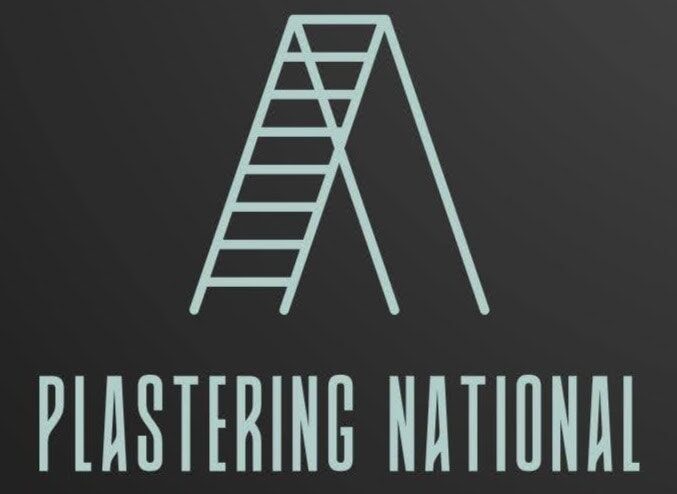Plaster walls are a cornerstone of architectural beauty. Their smooth, durable surface enhances the aesthetic value of any home.
However, even the best-maintained plaster can develop cracks and damage over time. Addressing these issues promptly preserves the wall’s appearance and prevents further structural deterioration.
Drawing from years of experience and industry best practices, this guide provides an authoritative and trustworthy approach to repairing plaster walls effectively.
Let’s Get Straight to the Point
This guide outlines how to repair cracks and damages in plaster walls, from identifying damage types to step-by-step fixes like cleaning, applying compounds, sanding, and painting for seamless results.
It includes tips for handling water damage and large holes and prevention strategies, such as addressing moisture and conducting regular inspections. Professional help is recommended for severe issues.
Understanding Plaster Wall Damage

1. Common Types of Damage
Professionals often encounter several types of plaster damage. Identifying the specific issue is critical to applying the right repair techniques:
- Hairline Cracks: These thin, surface-level cracks are typically caused by minor structural shifts or temperature fluctuations. While they may seem insignificant, leaving them untreated can lead to further deterioration.
- Settlement Cracks: Wider cracks result from foundational settling or significant building movement. These can compromise the wall’s structural integrity and require immediate attention.
- Impact Damage: Holes or dents caused by furniture, doorknobs, or accidental bumps are common in high-traffic areas. Even minor impact damage can become more visible over time if left unaddressed.
- Water Damage: Bubbling, peeling, or weakened plaster due to persistent moisture or leaks can compromise the wall’s strength and aesthetics. Addressing the root cause of moisture is essential before repairs.
2. Causes of Plaster Wall Damage
Experienced plasterers know that a variety of factors can contribute to wall damage:
- Moisture Intrusion: Leaks, condensation, or poor ventilation can damage plaster walls, causing them to bubble, peel, or crumble.
- Age-Related Wear: Plaster becomes brittle as it ages, making it more susceptible to cracking and chipping.
- Subpar Installation: Poor initial application, such as insufficient curing or improper mixing, can lead to premature damage.
- Structural Shifts: Even minor movements in a building can place stress on plaster walls, especially in older homes with less flexible materials.
Understanding these types and causes of damage allows you to develop a clear repair strategy, ensuring your efforts are effective and lasting.
Preparing for the Repair
1. Essential Tools and Materials
Professionals recommend assembling the following tools and materials before starting:
- Plaster Repair Compound: This specialised product ensures a durable and seamless finish.
- Joint Compound: Ideal for covering larger areas or smoothing over repairs.
- Sandpaper: Medium and fine-grit sandpaper are essential for achieving a smooth finish.
- Putty Knife: Used to apply repair compounds precisely and evenly.
- Paint Scraper: This removes loose plaster or paint in the damaged area.
- Painter’s Tape: Helps protect surrounding areas and ensures clean edges.
- Drop Cloths: Prevents messes on floors and furniture during the repair process.
- Primer and Matching Paint: Essential for achieving a professional finish that blends seamlessly with the rest of the wall.
2. Prioritising Safety
As a trusted company, we emphasise safety:
- Wear a Dust Mask: Protect yourself from inhaling fine plaster particles.
- Use Safety Goggles: Prevent dust or debris from irritating your eyes.
- Gloves: Shield your hands from potential irritation caused by plaster compounds.
- Ventilation: Work in a well-ventilated area to minimise exposure to dust and fumes.
Being fully prepared and prioritising safety ensures a smoother repair process and reflects the expertise and professionalism necessary for effective results.
Step-by-Step Guide to Fix Cracks and Damages
Step 1: Assess the Damage
Begin by thoroughly evaluating the wall. Minor hairline cracks may only require a small filling, whereas larger or water-damaged areas might need a more comprehensive approach. Carefully examine the surface for:
- The depth and length of cracks.
- Signs of loose or crumbling plaster.
- Any underlying causes, such as moisture or structural movement.
Documenting these observations can help you plan the repair process more effectively.
Step 2: Clean the Area
Ensure the damaged area is free from dust and debris. Professionals recommend:
- Wiping the surface with a damp cloth to remove loose particles and dirt.
- Using a paint scraper to carefully remove any peeling paint or loose plaster around the crack or damaged area.
A clean surface ensures the repair compound adheres properly, reducing the likelihood of future issues.
Step 3: Prepare the Surface
Proper surface preparation is critical for long-lasting repairs. Follow these steps:
- Use a utility knife to create a shallow V-shaped groove along the crack for hairline cracks. This provides a larger surface area to which the repair compound can adhere.
- For larger holes or dents, gently remove loose plaster around the edges to expose a solid, stable base for the repair.
- If the surrounding paint is flaking, sand the edges until you achieve a smooth, clean transition.
Step 4: Apply the Plaster Repair Compound
For seamless results, follow these expert tips:
- Mix the compound thoroughly if required. This ensures consistent texture and durability.
- Apply the compound with a putty knife, pressing it firmly into cracks or holes. Ensure there are no air pockets.
- Smooth the surface with the putty knife, feathering the edges to blend with the surrounding wall.
- Allow sufficient drying time as specified by the manufacturer. Rushing this step can compromise the repair’s longevity.
Step 5: Sand the Repaired Area
After the compound dries, sand the area to achieve a smooth finish:
- Start with medium-grit sandpaper to remove excess material.
- Follow with fine-grit sandpaper for a polished, professional result.
- Run your hand over the area to ensure it feels level with the surrounding wall.
Step 6: Prime and Paint
Finish the repair with priming and painting:
- Apply a primer to the repaired area. This prevents the paint from soaking unevenly into the plaster.
- Once dry, paint over the area, using a brush or roller to blend the edges seamlessly with the surrounding wall.
- Apply a second coat of paint if necessary to achieve full coverage.
Proper priming and painting ensure that the repaired area is virtually indistinguishable from the rest of the wall.
Advanced Repairs for Severe Damage
1. Addressing Water-Damaged Plaster
Dealing with water damage requires additional expertise and care:
- Identify and Eliminate the Source: Repair leaks or address ventilation issues to prevent further damage.
- Remove All Damaged Material: Carefully remove waterlogged plaster to reveal a solid, dry base.
- Dry the Wall: Use fans or dehumidifiers to thoroughly dry the area before beginning repairs.
- Apply a Water-Resistant Compound: Use a specialised product designed for damp environments to rebuild the damaged section.
- Follow Standard Repair Steps: Once the compound dries, sand, prime, and paint the area.
2. Fixing Large Holes or Extensive Damage
For significant damage, seasoned professionals suggest:
- Cut away the damaged plaster to reveal clean, solid edges. For easier patching, use a square or rectangular cut.
- Securing a piece of plasterboard to cover the area. Attach it with screws or adhesive, ensuring it aligns with the existing wall.
- Applying joint compound over the seams, embedding mesh tape for reinforcement. Smooth the compound to create a seamless surface.
- Sanding, priming, and painting as usual to blend the repair with the rest of the wall.
Preventing Future Damage
1. Proactive Maintenance Tips
Maintain your plaster walls with these expert recommendations:
- Regularly inspect walls for early signs of cracks, moisture, or peeling paint.
- Address leaks and ensure proper ventilation to control humidity levels.
- Use mesh tape or expansion joints in areas prone to cracking, such as corners and along ceilings.
- Avoid slamming doors or causing undue vibrations, which can stress plaster walls.
2. Professional Repairs When Needed

While many repairs can be handled by homeowners, consulting a professional for extensive or recurring issues ensures the problem is resolved effectively and safely.
Skilled plasterers have the tools, knowledge, and experience to address complex repairs and prevent future problems.
Conclusion
Fixing cracks and damages in plaster walls requires expertise, the right materials, and attention to detail. This comprehensive guide will help homeowners confidently address minor issues and preserve their walls’ structural and aesthetic integrity.
Professional assistance guarantees quality and peace of mind for severe or recurring problems. Prioritise regular maintenance to prevent damage and ensure your plaster walls remain a timeless feature of your home.
Frequently Asked Questions
What causes cracks in plaster walls?
Cracks in plaster walls can result from structural movement, foundation settling, or temperature changes. Moisture intrusion and age-related wear are also common causes.
Can I repair plaster walls myself, or should I hire a professional?
Basic tools and materials can often repair minor cracks and small holes. However, consulting a professional for extensive damage, structural issues, or recurring problems ensures lasting, high-quality results.
How do I prevent cracks in plaster walls?
Prevent cracks by promptly maintaining indoor humidity, addressing leaks, and using expansion joints in high-stress areas. Regular inspections and preventative maintenance are key.
What should I do if my plaster walls are water-damaged?
Fix the source of moisture first, then remove the damaged plaster and allow the area to dry completely. Use water-resistant materials for repairs to prevent future damage.
How long does it take to repair plaster walls?
The time required depends on the size and severity of the damage. Small cracks can be fixed in a few hours, while larger repairs may take a few days, including drying and finishing.

